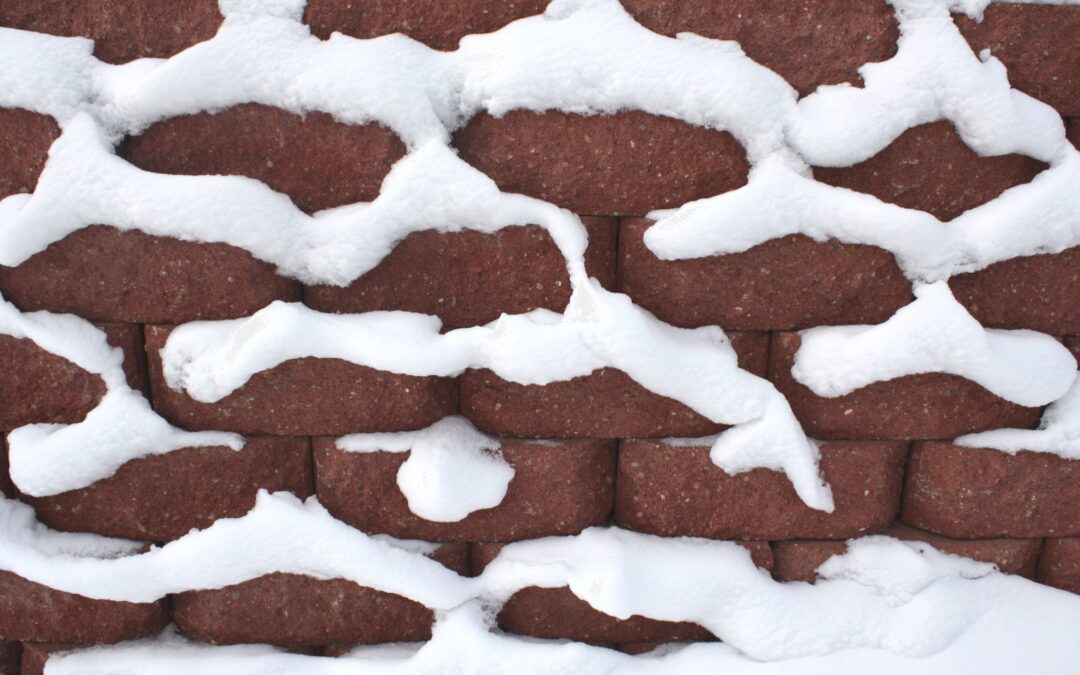Successful cold weather masonry construction requires knowledge of code requirements, workforce and planning capabilities, along with the capacity to be flexible and innovative. Building codes mandate certain procedures when constructing masonry during cold weather when the ambient air temperature is 400F and below. The requirements are grouped within temperature ranges, and while the provisions are prescriptive in nature, there is considerable latitude given for the contractor to use individual methods to satisfy the code requirements. This is in recognition of the wide variety of winter construction site conditions possible, and the fact that material, equipment and methods of construction technology advance rapidly.
Planning
A cold weather masonry construction and protection plan must be provided as a project submittal if job site temperatures are anticipated to drop below 40oF at any time during the masonry installation. With unanticipated delays, even a job that was supposed to be completed prior to Fall can easily slip below this target temperature. Planning for this possibility is crucial if cold weather requirements must be implemented
The primary objectives of the cold weather provisions of the building code are:
- Installing masonry assemblies that perform well no matter the weather during construction.
- Protecting materials from moisture and the potential for freezing.
- Eliminating installation of units that are too cold or contain frozen moisture, ice or snow.
- Producing and maintaining mortar and grout at mandated temperatures.
- Protecting the completed, or partially completed, masonry for the prescribed period of time
Heating Materials
The code allows heating water and/or aggregates to achieve the required mortar temperatures at the time of mixing. At the temperature range of 400F to 320F heating either the sand OR the water is expected to produce the desired result of mortar between 400F and 1200F. At the next temperature range, below 320F to 250F, heating BOTH sand and water is needed to accomplish the goal. Below 250F to 200F not only do the sand and water require heating, but any masonry surface under construction must be at least 400F and wind breaks or enclosures are required if the wind speed exceeds 15 mph.
Below 200F, a heated enclosure is mandated. Heating the water is probably the most effective technique for achieving the desired mortar temperature because of water’s ability to retain heat and impart it to the other ingredients. When dry mortar ingredients are delivered in bulk and mixed from silos, it’s a good practice to enclose the silo and provide auxiliary heat to the silo or the mixing area to keep the dry ingredients as warm as possible at least partially. A well-organized site makes it easy to set up for cold weather. Understanding temperature terminology is crucial to proper execution of cold weather requirements. Caution must be taken to not overheat the water or sand, as sand that is too hot can scorch, causing discoloration of the mortar, and water that’s too hot can cause flash setting of the mortar – both undesirable consequences.
Heating Work Areas
When temperatures reach 250 F, windbreaks or enclosures are required. While enclosures and heat are not required at all temperatures, heated enclosures can be used to meet required material temperature targets, provide for better quality masonry, improved conditions for craftworkers, and working conditions uninterrupted by weather. If an enclosure means being able to close out a job rather than accept a weather shut down, it may mean savings in the long run.
Mortar or Grout Admixtures
Admixtures used to accelerate mortar or grout setting are sometimes used, but only with caution, as some can cause corrosion of embedded metals or color changes. In addition, admixtures of any kind may only be used with the permission of the design professional of record. The use of accelerators does NOT negate the prescriptive cold weather requirements such as cover, heat, protection, etc. Note the following:
- No ‘anti-freeze’ as it doesn’t depress the freezing point sufficiently and it can reduce compressive and bond strength of the mortar or grout.
- Set accelerators are admixtures used to speed the set time of mortar and grout. They may be used only with prior approval.
- If an admixture is approved, non-chloride, non-corrosive accelerators are recommended.
- Using calcium chloride is not recommended as it causes corrosion to steel and metal accessories.
- All the prescriptive cold weather requirements are still required even if accelerators are used.
Good Practice Summary
- Include a cold weather plan with the submittals.
- Plan ahead so when the temperature hits 400 F, cold weather procedures can be implemented.
- Keep units covered and off the ground and don’t lay frozen units.
- Use materials only at mandated temperatures.
- Cover and protect masonry from freezing after construction for the mandated time.
- Consider enclosures even if not required.
Contact us
Our masonry and paving experts serve all central and northern New Jersey including Bergen, Essex, Hudson, Hunterdon, Passaic, and Union Counties. Address 55 Terrill Road, Plainfield, NJ 07062. https://junsproservices.com

